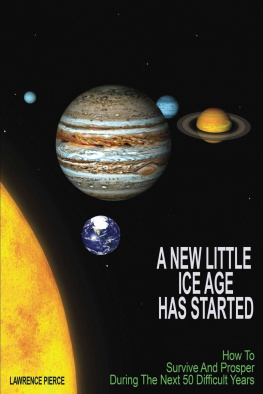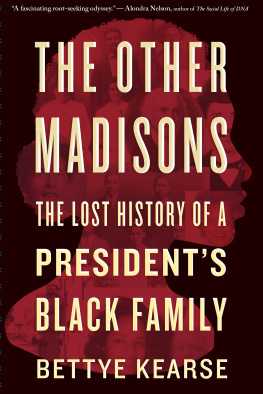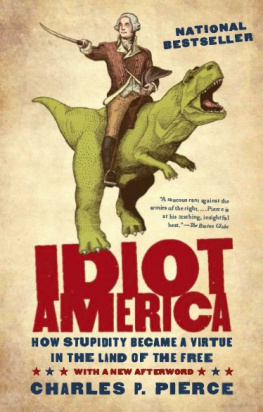INTRODUCTION
Dinosaurs with Saddles (August 2005)
T here is some artyou might even say designin the way southern Ohio rolls itself into the hills of northern Kentucky. The hills build gently under you as you leave the interstate. The roads narrow beneath a cool and thickening canopy as they wind through the leafy outer precincts of Hebron, a small Kentucky town named, as it happens, for the place near Jerusalem where the Bible tells us that David was anointed the king of the Israelites. This resulted in great literature and no little bloodshed, which is the case with a great deal of Scripture.
At the top of the hill, just past the Idlewild Concrete plant, there was an unfinished wall with an unfinished gate in the middle of it. Happy, smiling people trickled in through the gate on a fine summers morning, one minivan at a time. They parked in whatever shade they could find, which was not much. They were almost uniformly white and almost uniformly bubbly. Their cars came from Kentucky and Tennessee and Ohio and Illinois and from as far away as New Brunswick, in the Canadian Maritimes. There were elderly couples in shorts, suburban families piling out of the minivans, the children all Wrinkle Resistant and Stain Released. All of them wandered off, chattering and waving and stopping every few steps for pictures, toward a low-slung building that seemed to be the most finished part of the complex.
Outside, several of them stopped to be interviewed by a video crew. They had come from Indiana, one woman said, two impatient toddlers pulling at her arms, because they had been homeschooling their children and theyd given them this adventure as a field trip. The whole group then bustled into the lobby of the building, where they were greeted by the long neck of a huge, herbivorous dinosaur. The kids ran past it and around the corner, where stood another, smaller dinosaur.
Which was wearing a saddle.
It was an English saddle, hornless and battered. Apparently, this was a dinosaur that performed in dressage competitions and stakes races. Any dinosaur accustomed to the rigors of ranch work and herding other dinosaurs along the dusty trail almost certainly would have worn a sturdy western saddle. This, obviously, was very much a show dinosaur.
The dinosaurs were the first things you saw when you entered the Creation Museum, the dream child of an Australian named Ken Ham, who is the founder of Answers in Genesis, the worldwide organization for which the museum is meant to be the headquarters. The people here on this day were on a special tour. Theyd paid $149 to become charter members of the museum.
Dinosaurs, Ham said, laughing, as he posed for pictures with his honored guests, always get the kids interested.
AiG is dedicated to the proposition that the biblical story of the creation of the world is inerrant in every word. Which means, in this interpretation, and among other things, that dinosaurs co-existed with humans (hence the saddles), that there were dinosaurs in Eden, and that Noah, who certainly had enough on his hands, had to load two brachiosaurs onto the Ark along with his wife, his sons, and his sons wives, to say nothing of the green ally-gators and the long-necked geese and the humpty-backed camels and all the rest.
(Faced with the obvious question of how Noah kept his 300-by-30-by-50-cubit Ark from sinking under the weight of the dinosaur couples, Hams literature argues that the dinosaurs on the Ark were young ones, who thus did not weigh as much as they might have.)
We, announced Ham, are taking the dinosaurs back from the evolutionists! And everybody cheered.
This was a serious crowd. They gathered in the museums auditorium and took copious notes while Ham described the great victory won not long before in Oklahoma, where city officials had announced a decisionwhich they would later reverse, alasto put up a display based on Genesis at the citys zoo so as to eliminate the discrimination long inflicted upon sensitive Christians by the statue of the Hindu god Ganesh that decorated the elephant exhibit. They listened intently as Ham went on, drawing a straight line from Adams fall to our godless public schools, from Charles Darwin to gay marriage. He talked about the great triumph of running Ganesh out of the elephant paddock and they all cheered again.
The heart of the museum would take the form of a long walkway down which patrons would be able to journey through the entire creation story. The walkway was in only the earliest stages of construction. On this day, for example, one young artist was working on a scale model of a planned exhibit depicting the day on which Adam named all the creatures of the earth. Adam was depicted in the middle of the delicate act of naming the saber-toothed tiger while, behind him, already named, a woolly mammoth seemed on the verge of taking a nap.
Elsewhere in the museum, another Adam, this one full-sized, was reclining peacefully, waiting to be installed. Eventually, he was meant to be placed in a pool under a waterfall. As the figure depicted a prelapsarian Adam, he was completely naked. He also had no penis.
This seemed to be a departure from Scripture. If you were willing to stretch Jobs description of a behemoth to include baby Triceratops on Noahs Ark, as Ham did in his lecture, then surely, since he was being depicted before his fall, Adam should have been out there waving unashamedly in the paradisiacal breezes. For that matter, what was Eve doing there, across the room, with her hair falling just so to cover her breasts and her midsection, as though in a nude scene from some 1950s Swedish art-house film?
After all, Genesis 2:25 clearly says that at this point in their lives, the man and the woman were both naked, and they were not ashamed. If Adam could sit there courageously unencumbered while naming the saber-toothed tiger, then why, six thousand years later, should he be depicted as a eunuch in some family-values Eden? And if these people can take away what Scripture says is rightfully his, then why cant Charles Darwin and the accumulated science of the previous hundred and fiftyodd years take away the rest of it?
These were impolite questions. Nobody asked them here by the cool pond tucked into the gentle hillside. Increasingly, amazingly, nobody asked them outside the gates, either. It was impolite to wonder why our parents had sent us all to college, and why generations of immigrants had sweated and bled so that their children could be educated, if not so that one day we would feel confident enough to look at a museum full of dinosaurs rigged to run six furlongs at Aqueduct and make the not unreasonable point that it was batshit crazy, and that anyone who believed this righteous hooey should be kept away from sharp objects and their own money. Instead, people go to court over this kind of thing.
















